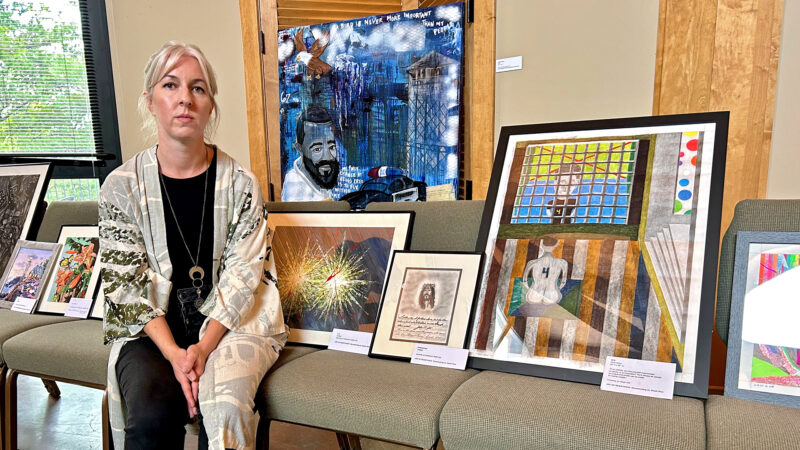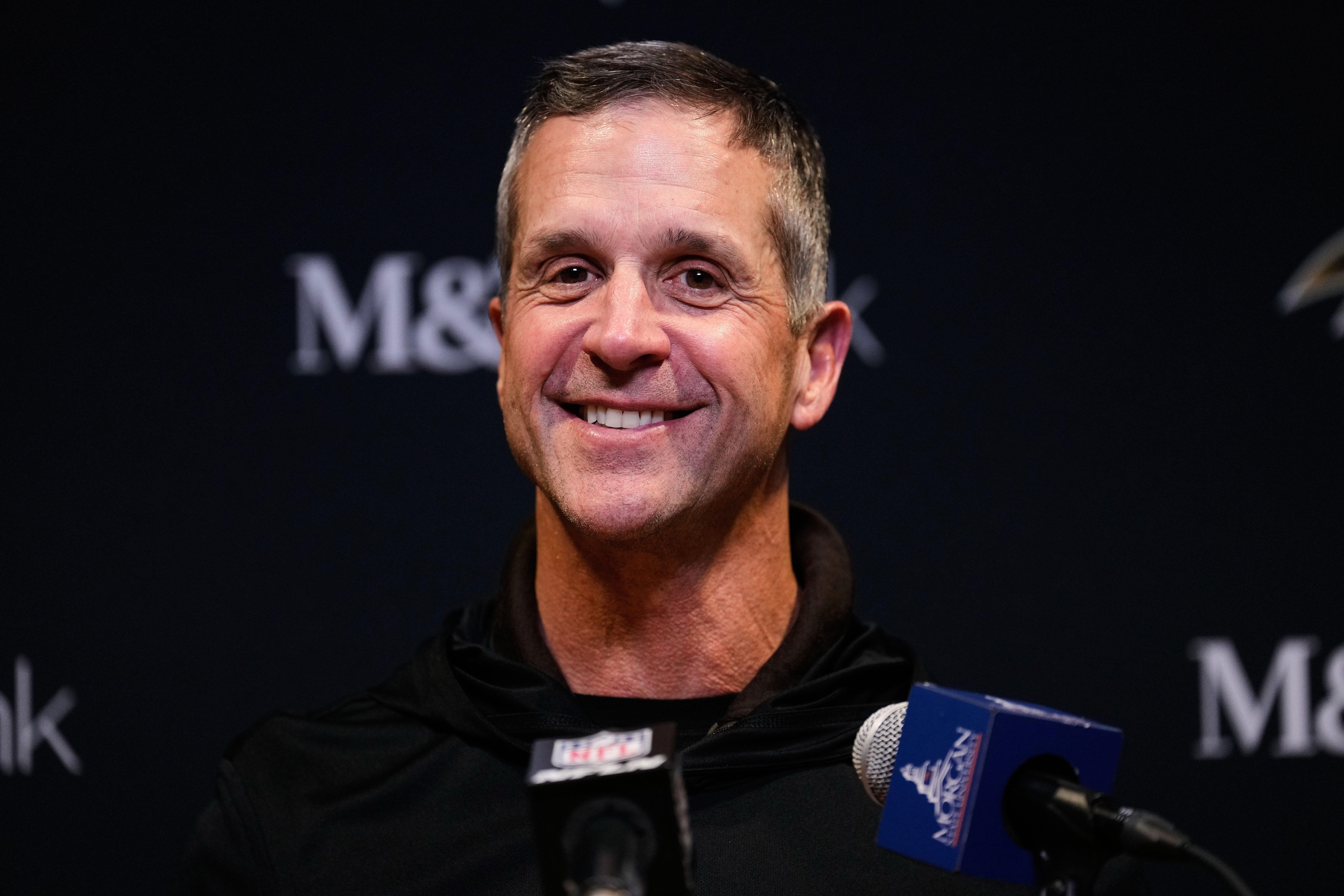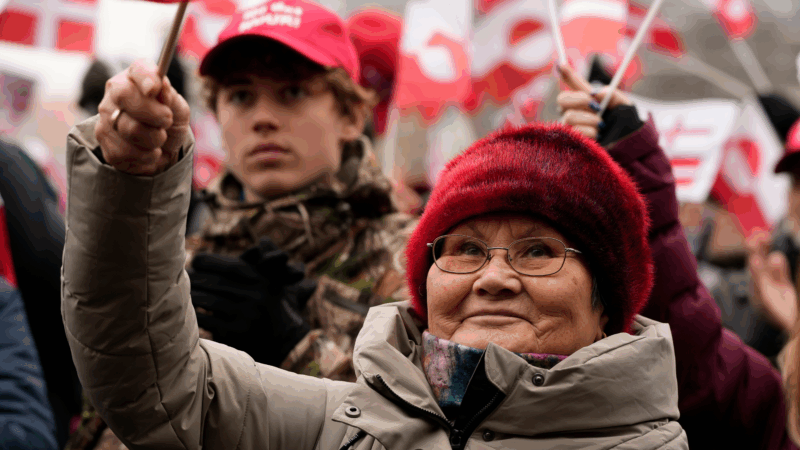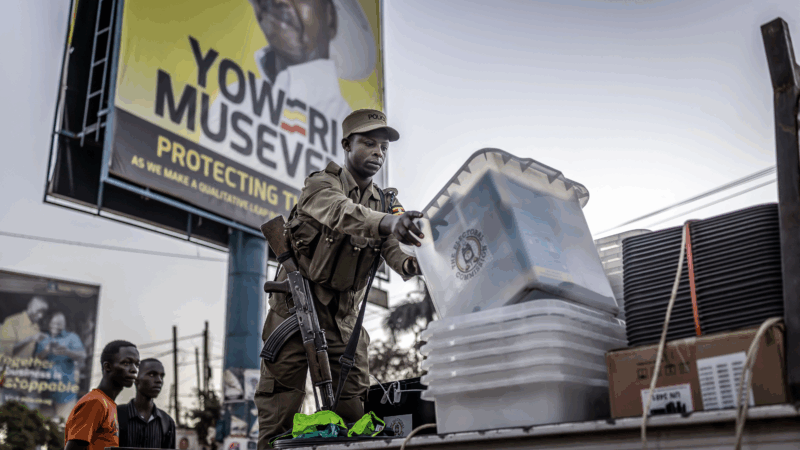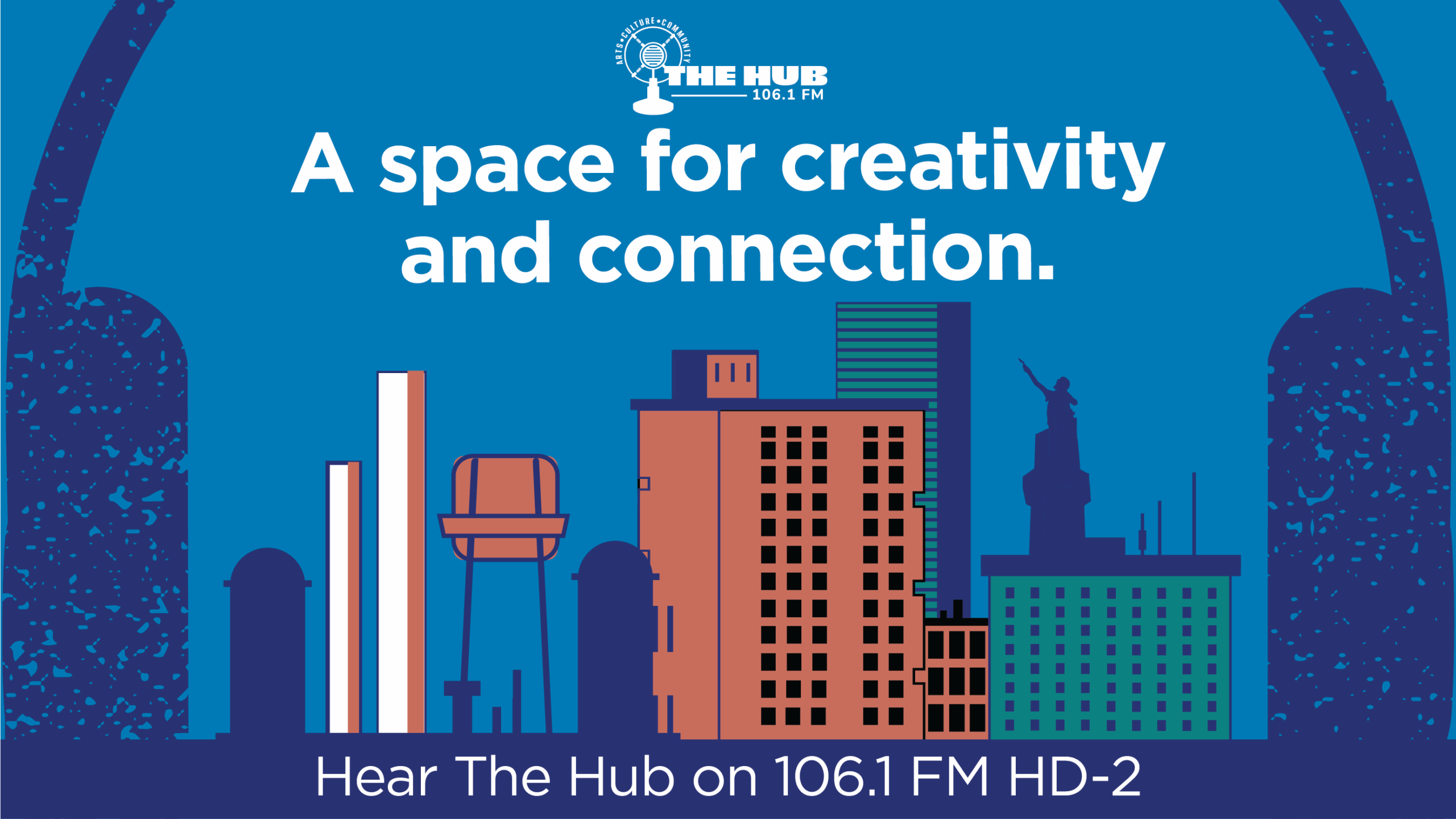An art exhibit reckons with Alabama’s death penalty toll
Dr. Katie Owens-Murphy sits with art submitted for the "The Art of Resistance: Documenting Alabama's Death Row" exhibit at the Unitarian Universalist Church of Birmingham on July 21, 2024. Owens-Murphy is among the organizers of the installation, which contains artwork from people incarcerated in Alabama.
The state of Alabama executed Gary Brown more than two decades ago for his connection to a fatal stabbing. But at a recent Sunday service in Birmingham, you could hear him preaching.
In the bustling foyer of the Unitarian Universalist Church, an archival recording of one of Brown’s sermons in prison thrummed under patrons’ lively chatter. Visitors stood with their necks craned back, reading rows of letters fixed to a wall.
The display was part of an art exhibit traveling through Alabama this summer. Using art and archival materials, “The Art of Resistance: Documenting Alabama’s Death Row” aims to spark conversations about the state’s use of capital punishment.
The wall correspondence included letters from prison staff and jurors on Brown’s case who asked for clemency for him, Katie Owens-Murphy explained to a reporter.
“The middle four letters are actually Gary’s letter, where he’s advocating for his own life,” said Owens-Murphy, who is among the exhibition’s organizers and a professor in Florence, Alabama.
“But obviously, the death certificate shows it was not successful.”
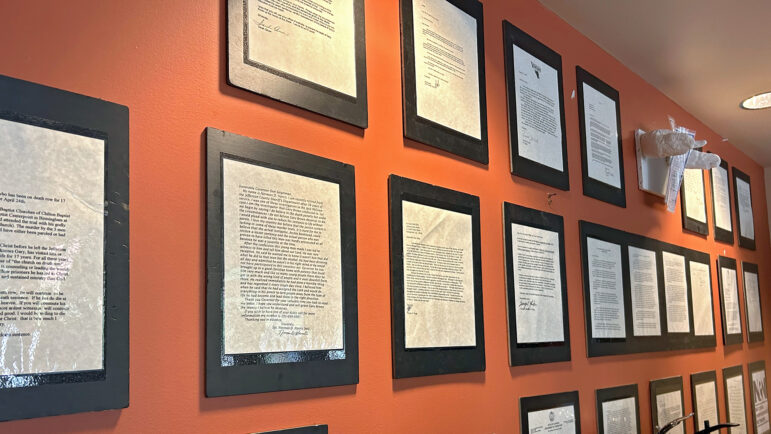
Lead artist Kerrigan Casey, Owens-Murphy and other artists worked to put the show together. It germinated with a trove of materials a group of incarcerated activists organized as Project Hope to Abolish the Death Penalty donated to Owens-Murphy’s university. (Owens-Murphy is on the group’s outside board of advisors.)
She joined Casey to bring those materials, and more, to life, creating an installation that has popped up at galleries and churches around the state. It is at the Lowe Mill ARTS & Entertainment Center in Huntsville through late September.
“I hope that even people who have not really thought about the death penalty at length learn something that they didn’t know before, that makes them question the process,” Owens-Murphy said of the exhibit.
The installation comes as Alabama’s pace of executions has ramped up. The Yellowhammer State has executed three people so far this year — more than any other state except Texas, according to the Death Penalty Information Center — with three more executions scheduled in 2024.
There also are more people incarcerated on the state’s death row than in Louisiana and Mississippi combined, and almost as many as in the much more populous state of Texas, data compiled by the Legal Defense Fund show.
University of New Orleans art history professor Anna Mecugni, who was not involved in the exhibition, said there’s a long history of art and activism coming together like this. She adds that collaborating on these projects “can be transformative” for the people who are affected.
Mecugni drew connections between this installation and recent artistic works engaging with mass incarceration in Louisiana, noting that art can “confront the unspeakable,” using visual language that goes beyond what’s easily expressed in words.
As a tool, it can also “challenge audiences to reconsider, and take concrete action against injustice,” she said.
‘I found it to be profoundly sad’
Work by artists incarcerated on death row lined chairs near the front of the sanctuary at the installation in Birmingham. A floral canvas by one of those people depicted a blooming profusion of salmon-pink tiger lilies.
Nearby, a large, stark black-and-white drawing showed the perspective of looking through a cell door. A card indicated it was drawn by Kenny Smith, who in January became the first person to be executed by nitrogen gas, drawing attention and controversy.
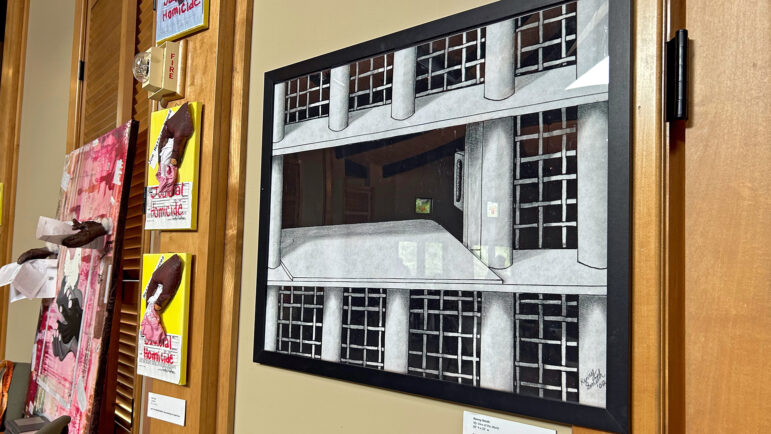
Richly textured canvases by Casey and other non-incarcerated artists played with the somber iconography and materials of executions, including death certificates marked “judicial homicide” and model lungs pierced by syringes of lethal injections.
Casey said her work on the show moved her, and she sometimes found it overwhelming.
“I found it to be profoundly sad, to be doing this kind of work — to know that some of these people that have submitted some of this work are executed already, or [are] no longer with us, or due to be executed,” she said in an earlier phone interview.
Casey is an artist and organizer who typically works on acrylic or mixed-media pieces, sometimes using recycled materials. Black culture is a typical subject in her work.
The project resonated with her at first because her mother was once incarcerated, but she ultimately learned a lot she had not previously known about Alabama’s capital punishment.
She hoped visitors took away the same kind of awareness from the installations and reflected on how this practice happens in their state.
“I didn’t know that someone could be executed because they didn’t have the right representation or the IQ, or simply because they weren’t the right color,” she said.
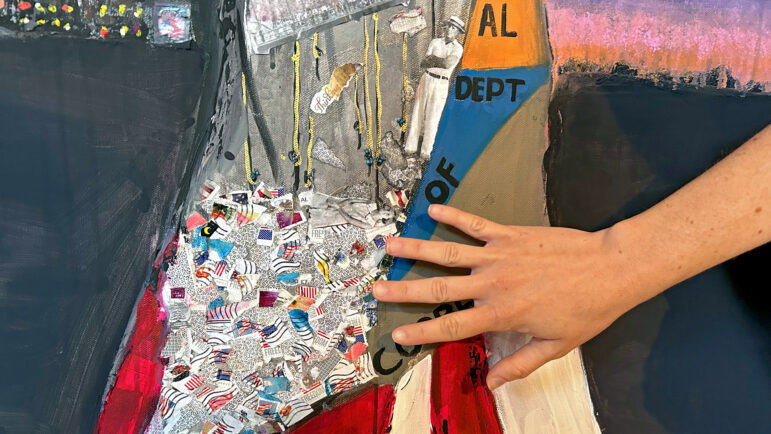
‘It just gives me that much more empathy’
In recent years, many states have shifted away from using the death penalty.
Nearly half of the United States ban it outright, with others pausing executions either officially or unofficially. Louisiana has not carried out an execution for more than a decade.
States have cited various reasons for moving away from capital punishment, including its expense and burden on courts, the irreversibility of the act and what some advocates describe as a racist bias in the way the penalty is applied in some cases.
Incarcerated people have also raised successful legal challenges to their death sentences, raising concerns about capital punishment’s irreproachability. In Alabama alone, at least 170 death sentences have been reversed, according to the Equal Justice Initiative.
Back in the church sanctuary, dozens of patrons milled through the exhibition, with several buttonholing Owens-Murphy to share thoughts on what they were seeing.
Congregant Kelci McDowell peered into a shoebox-sized model cell made with materials sourced from prison by someone who’s incarcerated. Aluminum foil wrapped a tiny model sink.
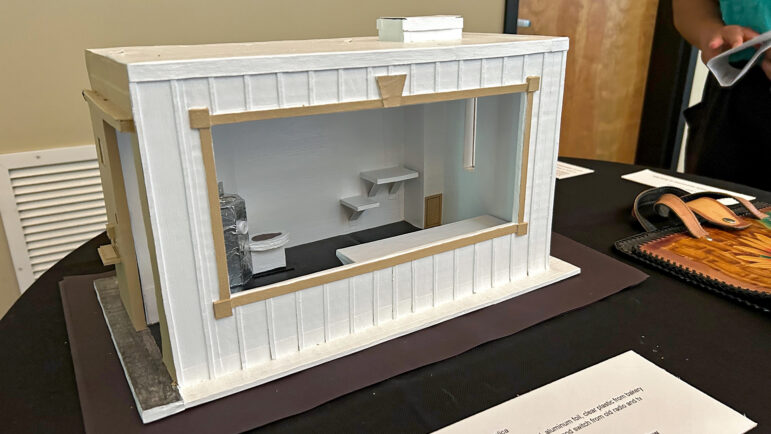
McDowell said she once worked on a hotline that took calls from people in prison reporting sexual assaults. She had not seen the whole exhibit, but what she was looking at was eye-opening.
“It just gives me that much more empathy, for the people that I’ve personally worked with and for people that I don’t know who are in prison,” she said.
Owens-Murphy said she hoped the show led to people having conversations with their families and friends about what they’d seen. They also are looking for future hosting sites.
“I mean, the art, if nothing else, is colorful, immersive. … It can be touched. It can be felt. And then maybe some of that engagement leads to some lingering thoughts afterward,” she said.
Alabama’s next execution, of Alan Eugene Miller, is planned for late September.
This story was produced by the Gulf States Newsroom, a collaboration between Mississippi Public Broadcasting, WBHM in Alabama, WWNO and WRKF in Louisiana and NPR.
New York Giants hire John Harbaugh as coach after identifying him as their top choice
Harbaugh joins the Giants 11 days after he was fired by the Baltimore Ravens. The Super Bowl champion is now tasked with turning around a beleaguered franchise.
US launches new retaliatory strike in Syria, killing leader tied to deadly Islamic State ambush
A third round of retaliatory strikes by the U.S. in Syria has resulted in the death of an Al-Qaeda-affiliated leader, said U.S. Central Command.
NASA rolls out Artemis II craft ahead of crewed lunar orbit
Mission Artemis plans to send Americans to the moon for the first time since the Nixon administration.
Trump says 8 EU countries to be charged 10% tariff for opposing US control of Greenland
In a post on social media, Trump said a 10% tariff will take effect on Feb. 1, and will climb to 25% on June 1 if a deal is not in place for the United States to purchase Greenland.
‘Not for sale’: massive protest in Copenhagen against Trump’s desire to acquire Greenland
Thousands of people rallied in Copenhagen to push back on President Trump's rhetoric that the U.S. should acquire Greenland.
Uganda’s longtime leader declared winner in disputed vote
Museveni claims victory in Uganda's contested election as opposition leader Bobi Wine goes into hiding amid chaos, violence and accusations of fraud.

